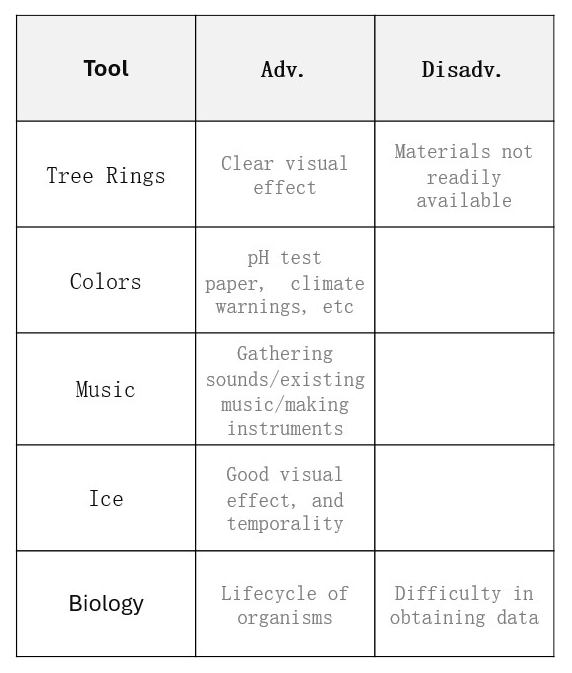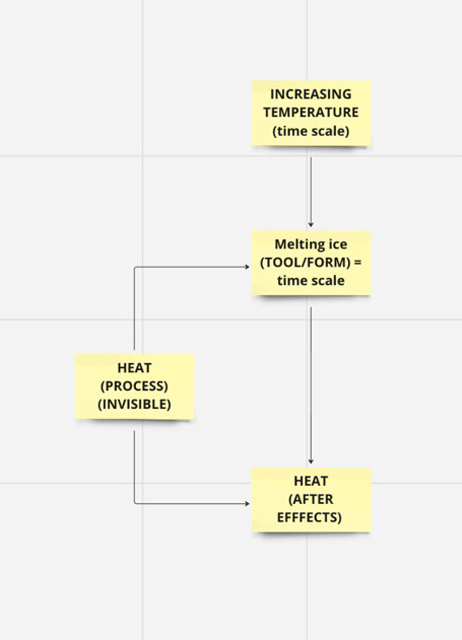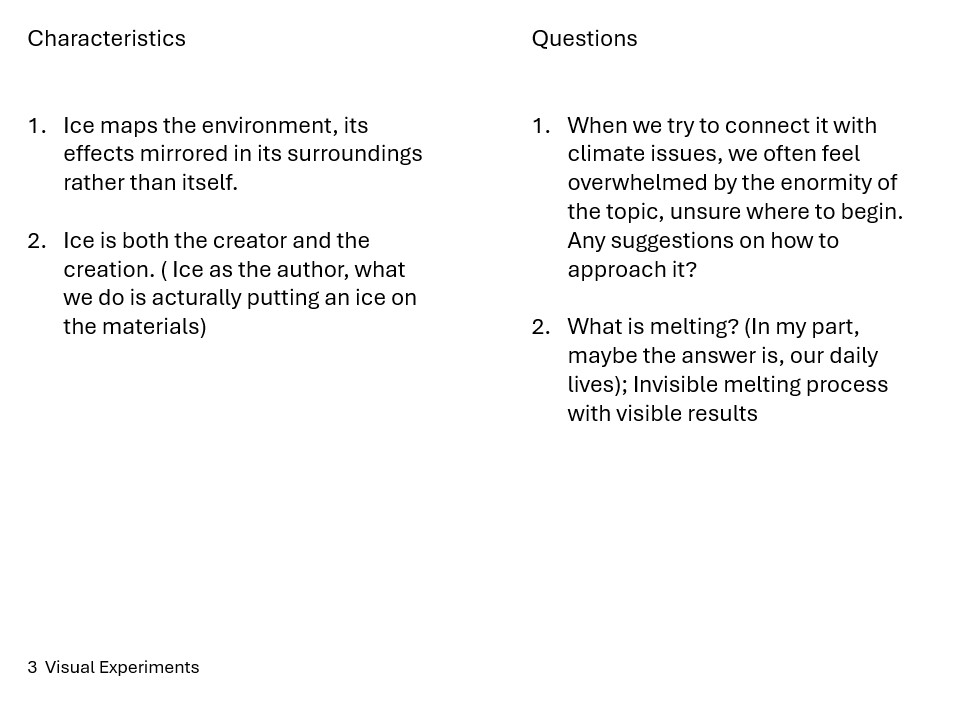The tool we chose is ice.
Initially, we discussed the possibilities of using these tools:

Among them, we found that ice has both the following properties:
- Rich visual potential;
- Temporality or cyclical nature;
- Association with climate issues.
These characteristics are integrated into one process:

Based on this process, we started to “identify”: How to use ice as a tool that measures cycle/time to present climate issues? (This week we explored more of the first half of this question.)
This week, we attempted to conduct visual experiments in as many directions as possible.
1. Visual Experiment by Zeina
2. Visual Experiment by Joyce
https://22015097.myblog.arts.ac.uk/2024/02/22/y1u1-methods-of-context-ualising/
3. Visual Experiment by me
My experiment is divided into two parts. In the part 1, I explore the visual impact of melting.
In Melting 1, I translated the result of melting. It’s no longer water but the surroundings of the image reflecting the melting of ice.
In Melting 2, I translated the physical properties of melting. The water produced after the ice melts is no longer a transparent, soft covering but an intrusion, forcefully pushing the surrounding images apart with its edges. The flow becomes a sharp chop.
In the part 2, I attempted to imply the presence of ice in the narrative. Using the original Roman Holiday scene of Hepburn eating ice cream, I iterated two new versions based on the rule of “whether ice cream exists in the scene”.
